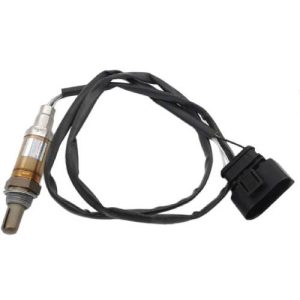Your cart is currently empty!
The Applications and Significance of Oxygen Sensors
I.Applications of Oxygen Sensors
Oxygen sensors are sensors used to monitor and control the oxygen content in gases. They are widely applied in various fields such as industry, environmental protection, healthcare, and energy. The main applications of oxygen sensors are as follows:
Industrial Applications In the industrial sector, oxygen sensors are used to monitor and control gas flow rates, gas composition, and combustion processes. For example, in the chemical industry, oxygen sensors can be employed to monitor and control the oxygen content during chemical reactions to ensure stable reactions.
Environmental Applications In the field of environmental protection, oxygen sensors are used to monitor atmospheric conditions and wastewater treatment. For instance, in atmospheric environments, oxygen sensors can monitor air quality and help prevent the adverse effects of air pollution on human health.
Healthcare Applications In the healthcare sector, oxygen sensors are used to monitor the oxygen content within the human body, aiding in the diagnosis and treatment of diseases. For example, during surgeries, oxygen sensors can monitor the oxygen levels of patients to ensure their safety.
Energy Applications In the energy field, oxygen sensors are used to monitor the oxygen content during fuel combustion processes to ensure efficient energy utilization. For instance, in coal-fired power plants, oxygen sensors can monitor the oxygen content during coal combustion, thereby improving coal efficiency.
II. Significance of Oxygen Sensor Applications
The applications of oxygen sensors in various fields hold significant importance, as outlined below:
Enhancing Production Efficiency and Product Quality In industrial production, monitoring and control through oxygen sensors can optimize process flows, thus improving production efficiency and product quality.
Protecting the Environment and Human Health The application of oxygen sensors in environmental protection aids in safeguarding the environment and human health. For example, monitoring air quality through oxygen sensors in atmospheric environments effectively mitigates the impact of air pollution on human health.
Saving Lives In the healthcare sector, the use of oxygen sensors assists in disease diagnosis, treatment, and ultimately, life-saving measures. For example, during surgeries, timely detection of inadequate oxygen levels through oxygen sensors ensures patient safety.
Improving Energy Utilization Efficiency Oxygen sensors contribute to enhancing energy utilization efficiency and reducing energy consumption in the energy field. For instance, by monitoring coal combustion processes through oxygen sensors in coal-fired power plants, coal efficiency can be optimized.
In conclusion, the applications of oxygen sensors in various fields hold significant importance. They not only enhance production efficiency and product quality but also protect the environment, safeguard human health, save lives, and improve energy utilization efficiency.






Leave a Reply